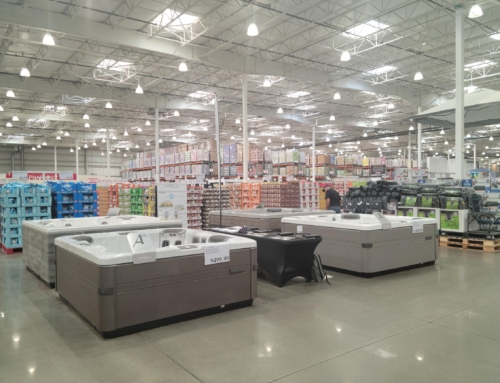Once, customer service reviews amounted to nothing more than comments in a suggestion box near the showroom door. Today, in the advent of consumer review sites and social media, online feedback is commonplace and available for all to see. Let’s look at some stats from a 2017 BrightLocal report:
- Consumers read an average of 7 reviews before trusting a business–up from 6 in 2016.
- Positive reviews make 73% of consumers trust a local business more.
- 85% of consumers trust online reviews as much as personal recommendations.
When everyone who owns a computer or smartphone can publish feedback about his or her experience with your spa dealership, you have to put effort into encouraging positive reviews for your business. Similarly, you need to know how to manage your online reputation, addressing valid criticism when offered and parsing out illegitimate reviews.
The Value of Customer Reviews
Too often, retailers perceive anonymous online reviews as a threat to their reputation. In reality, online feedback can do loads to improve your public image and bring more customers into your showroom. If you’re confident in the quality of your products and services, then online reviews are an invaluable marketing asset.
Brian Cohen of All Florida Pool and Spa Center finds online customer reviews “extremely effective for increasing sales.” He likens the practice to dining out: “Just as if you are debating which new restaurant to try out, you typically will read their reviews first to see what others are saying. This will play a big role in what restaurant you choose, or in this case, what hot tub dealer you go to look at, and hopefully buy from.”
According to BrightLocal, Yelp & Facebook are local consumers' most trusted review sites, followed by Google and BBB.org.
In other words, if you feel you do business right, you’ll want your customers’ experiences known. Today, most consumers see online reviews as reputable and trustworthy indications of quality. The more reviews you receive and the better they are, the more likely prospective leads will come to you for their spa purchases.
How to Get More Reviews
Accumulating reviews takes time and effort. Despite their dependence on them, most consumers rarely post reviews on their own without some encouragement, or worse, a uniquely bad experience. BrightLocal reports that, in 2017, 68% of consumers left a local business review when asked.
In order to boost your online reputation (and overcome negative reviews), you need to encourage reviews of generally positive experiences, especially the ones that aren’t exceptionally unique. Here are a few ways you can achieve it:
1. Ask for “Feedback”
If you find it awkward to ask your customers outright to leave a review of their experience, you’re not alone. In fact, Cohen has learned “that ‘feedback’ is a better way to ask, as opposed to, ‘Hey, can you leave me a review?’ Customers will typically feel pressured if you ask for a review and think it’s a whole essay they need to write.” Online reviews shouldn’t feel like homework; rather, your customers should want to write them.
2. Create Social Media and Review Site Accounts
Customers can’t leave reviews if there’s nowhere to post them. Make sure you sign up for accounts on all the major social media and review sites, including Yelp, Facebook, Twitter, and Google+. (According to BrightLocal, Yelp & Facebook are local consumers’ most trusted review sites, followed by Google and BBB.org.) Create a presence on these platforms and post relevant content so your customers have more to engage with.
3. Incentivize the Sales Team
Incentivize your sales staff to encourage more customer feedback with incentives. For instance, you could offer an additional $50 for every three reviews they receive. This can help your team engage with their consumers and increase the likelihood of a positive review.
4. Incentivize Consumers
While you can’t pay for positive feedback, you can incentivize your customers to write a review. For example, you could offer 10% off a future purchase when they leave a review of their experience. Though this won’t guarantee positive reviews, it can proliferate the amount of feedback you receive.
5. Engage With Your Reviewers
Whether positive or negative, always respond to your reviews. If you receive criticism, ask the reviewer if they wish to further discuss what went wrong and offer ways to resolve the situation. If you earn a positive review, thank the customer for their business and remind them that you’re always there if they have any concerns.
Encouraging Positive Reviews
Ultimately, your goal is to gain as many positive reviews as possible. Keep in mind that 49% of consumers need at least a four-star rating before they choose to use a business. While you can’t guarantee a rave review every time, you can encourage them.
49% of consumers need at least a four-star rating before they choose to use a business.
For example, when you know a spa sale and order completion was met to expectation, ask the customer to post about his or her experience. “I encourage online customer reviews by asking for feedback after the tub has been delivered and I know they are satisfied,” Cohen explains. “Once I deliver a hot tub and I know they are happy, I will say something like, ‘Hey, if you have some time to leave some feedback on Google/Facebook and tell others how happy you are, that would mean a lot to us!'”
Finally, keep it simple for consumers to leave a review. More often than not, customers won’t seek out your information on their own. With his customers, Cohen makes it easy for them and emails/texts the exact link or location for them to go to “so they don’t have to go through a whole ordeal and spend hours finding us online.”
Making the Most of Online Reviews
While online reviews are important branding and recognition tools, they are also helpful teaching aids in growing your business and expanding your customer base. To get the more out of your online review, take some of these steps to better manage and utilize customer feedback.
1. Monitor Social Media
Keep a sharp eye on your customers’ social media engagement. Most platforms allow you to set alerts and notifications when there’s been a recent interaction with your page. The sooner you see feedback, the sooner you can respond.
2. Identify Illegitimate Reviews
Unfortunately, not all reviews are legitimate. Whether the result of trolls, bots or spam, your review pages can sometimes receive scathing, yet falsified reviews. Regularly monitor your social media pages for suspicious reviews and report any experiences you know to be false.
3. Respond to All Feedback
No matter what the customer has to say, good or bad, always provide a response. They took the time out of their day to comment on their experience in your showroom; at the very least, you should reciprocate the courtesy. You’ll find that generating an online dialogue builds consumer loyalty among returning and new customers alike.
4. Learn From Criticism
When you’ve received a legitimate, though less than flattering review, don’t become defensive. After remedying the situation with your customer, discuss ways your business can avoid the same mistakes in the future. At the end of the day, feedback is meant to instruct businesses in ways they can improve.
How to Deal with Negative Feedback
Let’s face it–not all customers are going to be happy with their experience in your showroom. If they decide to voice their opinion online, you’ll have to deal with the fallout of a negative review. One positive or negative review is not enough to build or tarnish a reputation. In fact, bad reviews can help businesses, as they actually work to increase trust. If customers see only good reviews, they may become suspicious.
Many bad reviews are not entirely negative and help customers reach better purchase decisions. If you receive a scathing review, here’s what you can do to mitigate the situation and avoid escalation:
- Respond quickly and thoughtfully in a public forum.
- Offer an opportunity to speak directly.
- Suggest possible resolutions.
- Avoid excuses or reverse blame.
It takes consistency and regular feedback to build an online presence. If you haven’t already, encourage your customers to provide feedback after their shopping experience. You may not only be pleasantly surprised at the level of satisfaction, you may also learn new ways to improve your business.









Leave A Comment